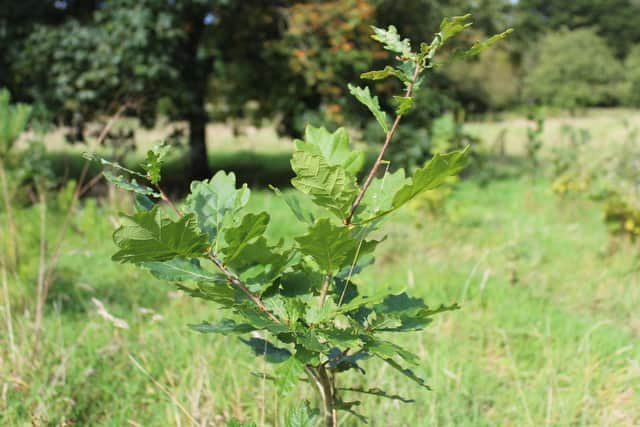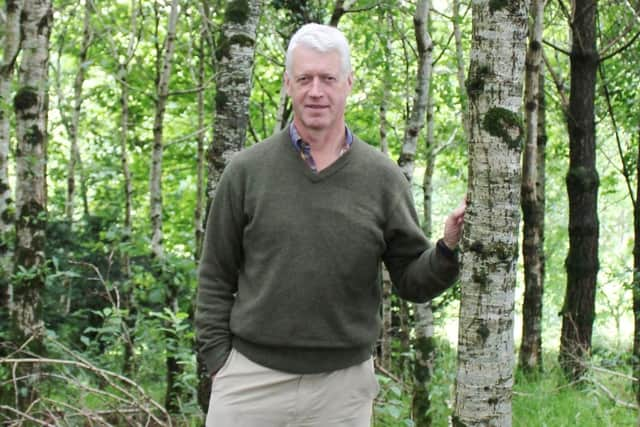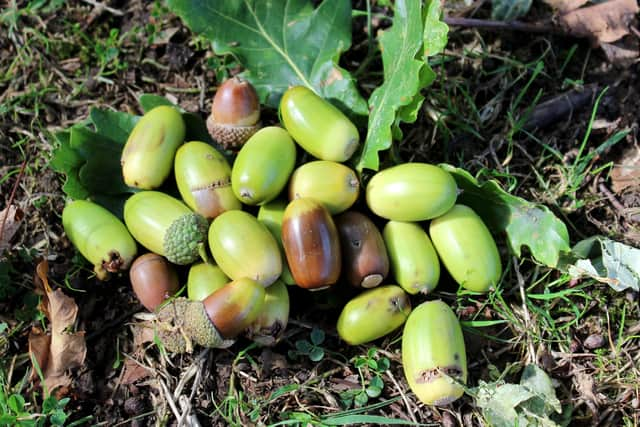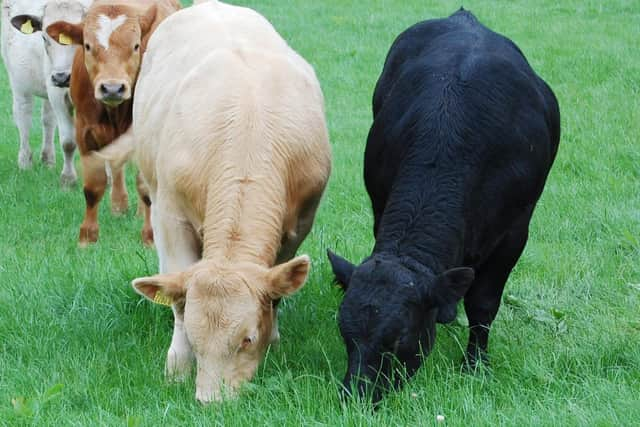Trees will be an integralpart of our future
and live on Freeview channel 276
This scenario takes full of account of the reality that we enjoy the perfect climate in which to grow trees. Moreover, our soils are equally suited to woodland and forestry development. If we go back 2,000 years, the entire island of Ireland was, basically, one large forest.
Contrast this with the reality that Northern Ireland currently ‘enjoys’ the lowest level of tree cover in Europe with woods accounting for just 9% of the total land area. This is lower than the Republic of Ireland (11%), the UK (13%) and European Union (38%).
Advertisement
Advertisement
Two years ago, Department of Agriculture, Environment and Rural Affairs (DAERA) Minister Edwin Poots pledged to help tackle climate change by planting 18 million trees over the next 10 years – 10 for every person in Northern Ireland.


The ‘Forests for our Future’ programme is Northern Ireland’s biggest and most ambitious plan to develop our forests and contribute to sustainable economic growth.
Minister Poots said: “Forests are a natural and vital resource, enjoyed by people across the world. Each year in Northern Ireland, our forest parks are visited around five million times and contribute greatly to positive physical and mental health and help people to connect with their environment.
“However, forest cover in Northern Ireland currently sits at 8%, well behind the UK average of 13%. We plant only 200 hectares of woodland per year, instead of the 900 hectares recommended recently by the Committee on Climate Change. That is why I have launched ‘Forests for our Future’ - my Department’s biggest and most ambitious plan to improve and sustain our forests and contribute to economic growth.”
The ‘Forests for our Future’ programme pledges to:


Advertisement
Advertisement
- Plant 18 million trees (9,000 hectares of new woodland) - 10 trees per person in Northern Ireland.
- Improve the resilience of our forests and woodlands
- Increase their contribution to a sustainable, healthy environment;
- Increase their contribution to NI’s sustainable economic growth;


- Enable more people to improve their health, wellbeing and life chances; and
- Contribute to the UK Net Zero by 2050 target.
Advertisement
Advertisement
Highlighting the benefits of the new programme, the Minister said: “More forests and more trees will help to mitigate climate change – when a tree breathes, it inhales carbon dioxide and exhales oxygen. Across its lifetime, typically one tree can absorb enough carbon dioxide to offset emissions from an average car travelling 3,000 miles. There are many more things I intend to consider to mitigate carbon emissions, but tree planting is one of the most simple and low cost options open to us and is a great step in the right direction.
“Furthermore, planting more trees will make a significant contribution to Northern Ireland’s sustainable economic growth - the forestry sector generates about £60 million per annum from timber production activity, sustaining approximately 1,000 rural jobs. A further £60-£80 million is generated in the local economy from forest based recreation and tourism. I want to further enhance that through this programme.”


Regarding land acquisition, the Minister said: “Existing publicly owned land, including local government land, has the greatest potential for woodland creation in the short term. I have written to Ministerial colleagues and Chief Executives of local Councils seeking their support and commitment to make public land available for tree planting. I also plan to establish an Afforestation Forum to develop an action plan for increasing afforestation and I will oversee this work personally.”
Concluding, Minister Poots said: “I will continue to play a lead role in increasing afforestation and creating a sustainable environment. With the leadership, commitment, skills and willingness available to us, we will significantly increase forest cover over the next decade.”
Advertisement
Advertisement
Meanwhile, One of Northern Ireland’s leading foresters has confirmed the positive potential of tree planting as a front line response for agriculture as the industry seeks to dramatically reduce its carbon footprint over the coming years.
Premier Woodlands’ managing director John Hetherington was responding to the recent publication of the second Centre for Innovation Excellence in Livestock (CIEL) report, assessing the carbon intensity of all UK livestock production systems.
Northern Ireland’s Agri-Food and Biosciences’ Institute (AFBI) was heavily involved in the research and modelling studies referenced in the report.
John Hetherington continued:“The potential for new woodland creation to increase carbon sequestration levels on farms across Northern Ireland is immense.
Advertisement
Advertisement
“I note the affirmation by AFBI staff that increasing areas of farm land will become available for tree planting purposes over the coming years.
“This prediction is set against the backdrop of overall food output levels being maintained at current levels while the efficiency of livestock production systems is ratcheted up in line with our climate change targets.
“I welcome the formal recognition by AFBI that enhanced rates of tree planting must be attained.
“But this will only be achieved if government fundamentally reviews its trees planting policies. The sad reality is that the current forestry and woodland development schemes are not fit for purpose.”
Advertisement
Advertisement
According to the Premier Woodlands’ representative, Northern Ireland’s tree planting rates continue to fall behind the targets built into the current Forest Expansion and Small Woodland Grant schemes.
“This is not a new phenomenon,” he stressed.
“Over the past forty years, most of the woodland development schemes introduced here have failed to meet their planting targets.
“As a consequence, Northern Ireland is now the least afforested region of Europe. And, yet, we have a very suitable climate and soils in which to grow trees.”
Looking to the future, John Hetherington believes that two fundamental decisions must be taken by government to ensure that tree planting is placed centre stage in the drive towards land use sustainability.
Advertisement
Advertisement
He explained:“First and foremost woodland development must be recognised as a mainstream land use option and supported accordingly.
“Unfortunately, this issue is not referenced in any meaningful way within the future policy framework document, published by agriculture minister Edwin Poots a number of months ago.
“This situation must be rectified as a matter of priority.
“In tandem with measures of this nature, we also need a Forest Service that is fit for purpose.”
Hetherington continued:“We need an agency that is properly resourced. This is not the case at the moment.
Advertisement
Advertisement
“Last year approximately 300ha of new tree planting was carried out in Northern Ireland.
“This figure would need to be trebled if the carbon sequestration role for trees now envisaged by organisations like AFBI is to be fulfilled.
“Within this type of scenario, the need to scale up and further resource Forest Service is obvious.”
John Hetherington concluded:“Tree planting both broadleaf and conifer, will play a critically important role in the local farming sectors’ response to climate change.
Advertisement
Advertisement
“But fundamental steps must be taken by policy makers to ensure this becomes a reality.
“The current forestry and woodland development schemes are not working. Fundamentally new thinking must be brought to bear, where these matters are concerned. And the clock is ticking.”
Prior to the last Stormont Assembly elections, the Woodland Trust set out its tree planting priorities for the next Northern Ireland Executive. In essence, these can be achieved by:
- Ensuring that tree planting supports nature’s recovery as well as tackling the climate crisis.
Advertisement
Advertisement
- Introducing a Land Use Strategy that promotes nature-based solutions to address climate change biodiversity loss.
- Introducing a Tree Strategy for Northern Ireland that includes ambitious targets for native woodland creation.
- Increasing funding for forestry grants that deliver both nature and climate objectives.
- Recognising and investing in the wider benefits of trees as green infrastructure to reduce flood risk, provide noise barriers and improve air quality.
Advertisement
Advertisement
- Encouraging all councils in Northern Ireland to adopt a tree strategy or equivalent (if they do not currently have one), map their tree canopy cover and set ambitious tree planting targets.
But within all of this there is a fundamental reality that can never be over looked: securing any increase in Northern Ireland’s level of woodland cover will require the full support and co-operation of farmers.
The core question then arises: can this be achieved without impacting on local food output levels? And the answer here seems to be yes.
Driving such a transition will be the introduction of more efficient farming systems: delivering current levels of food output from a smaller land base. In turn, this will free-up ‘acres’, which can be planted out in trees.
Advertisement
Advertisement
This is a win:win scenario for everyone. A more efficient farming industry has a lower carbon footprint while accelerated levels of tree planting increase overall carbon sequestration levels.
And this is not theory: the recently launched ARCZero project is showing that all of this is possible.
Another key driver for the future is the recently launched Soil Nutrient Health Scheme. It will facilitate the accurate determination of the carbon ‘locked up’ in soils and the woodland areas on every farm across Northern Ireland.
In turn, this opens up the possibility of local farmers trading the carbon stores that they actually manage.
Advertisement
Advertisement
It’s fast becoming obvious that the ability to store carbon that would otherwise escape to the atmosphere has a very real monetary value.
So could carbon become a form of ‘black gold’ for agriculture here in Northern Ireland? We won’t have long to find out.
But what we do know is that trees are recognised as long-term, carbon sequestration resources.
This scenario is fully accepted by the Ulster Farmers’ Union.
Advertisement
Advertisement
The organisation’s president David Brown commented:“Farming is being targeted in the climate change debate and many seem unaware of the active role the land-based sector is making in the production of renewable energy. With technological developments this could be integrated into further farm businesses and the carbon savings could be accelerated.
“Yet, carbon savings emulating from on-farm small scale renewables are not being considered under current carbon accounting data. On-farm renewables fall into the energy inventory, the same way on-farm tree planting goes into ‘Land Use, Land Use Change and Forestry’.”
He continued:“The UFU message is that our farmers are the climate change solution, not the problem. Consequently, Northern Ireland farming must be given credit for carbon savings emulating from on-farm renewable technologies and this need to be reflected in the agriculture figures.”
So there you have it. Carbon farming is the new frontier for agriculture in Northern Ireland. Rather than being regarded as a problem, there is a growing belief that the challenge of climate change and the associated management of carbon could become a win:win scenario for local farmers. Let’s hope so!